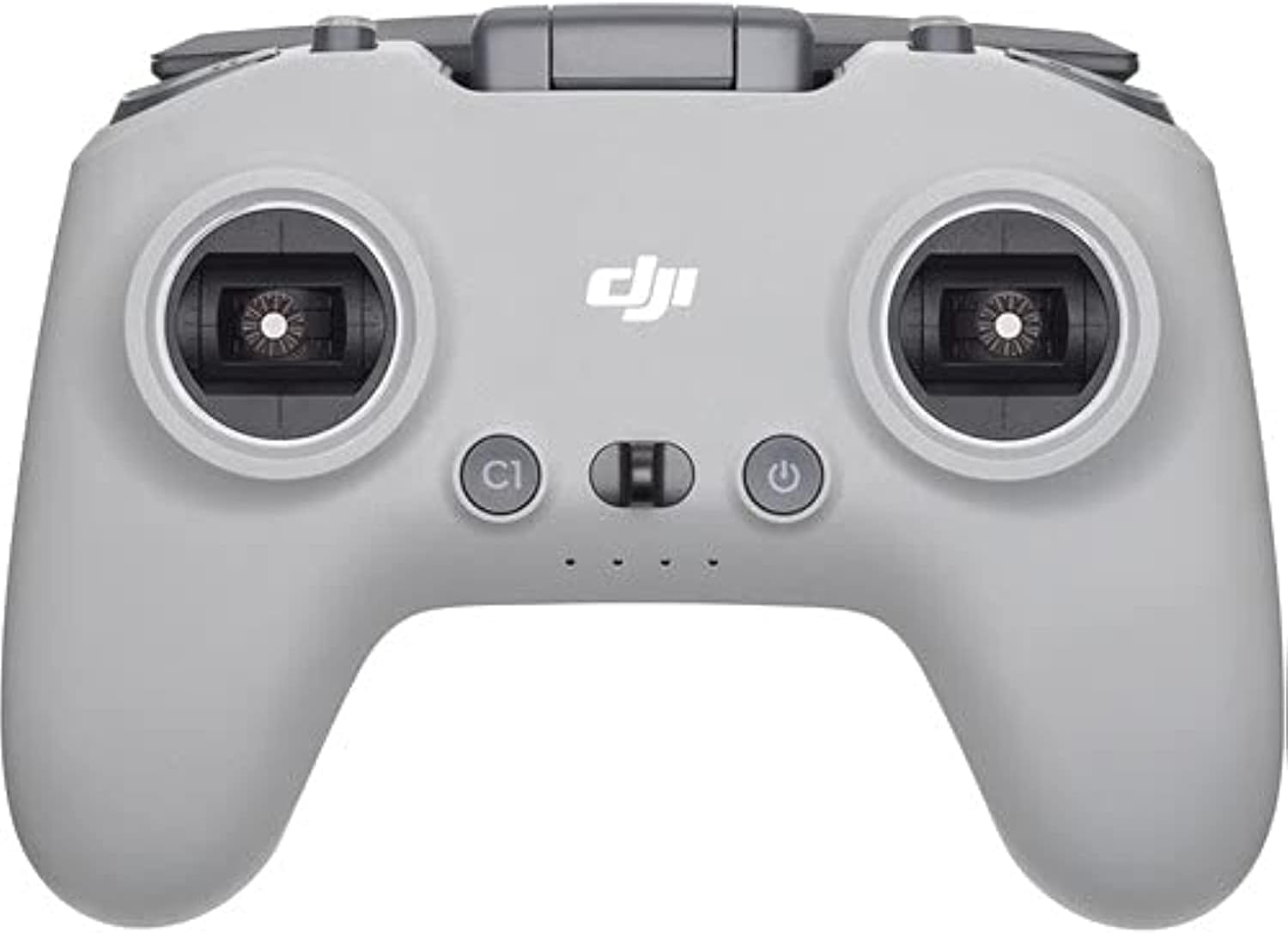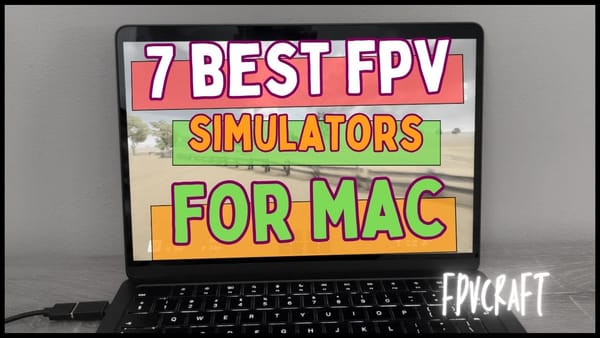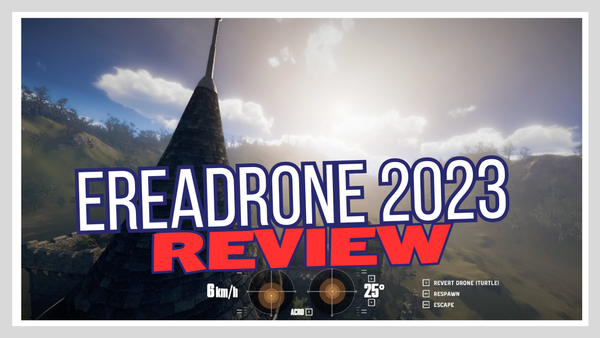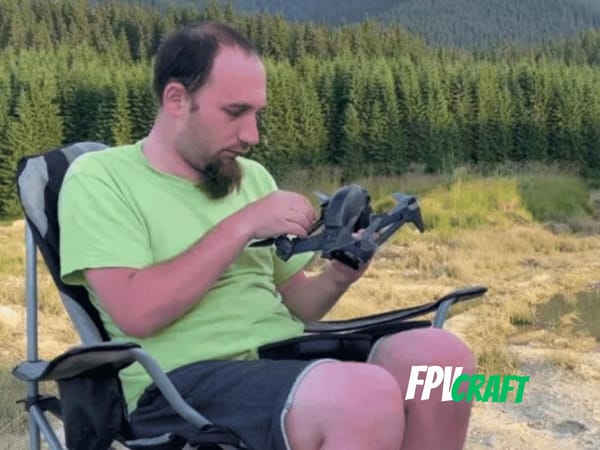9 Reasons to Choose DJI Avata over DJI FPV Drone
Here, I want to share with you 9 good reasons why you should choose the DJI Avata drone over the DJI FPV.

The DJI Avata is simultaneously a big success for DJI with their second FPV drone introduction and many new drone pilots and a crumble for some FPV drone pilots.
With the good and bad, the DJI Avata is one of the best ready-to-fly FPV drone kits you can get.
But also, we have DJI FPV as an option. Why not a custom FPV drone instead?
Many new drone pilots and beginners to FPV would prefer the simplicity of choosing an FPV drone, ready to fly with an excellent kit, rather than starting a complex and time-consuming process of selecting a custom FPV drone and accessories.
Therefore, in this topic, I want to share with you 9 reasons why you may want to choose the DJI Avata over the DJI FPV.
Note: This article is the second of a short series with reasons why either the DJI FPV or Avata is better than the other and why you may want to choose it.
Here’s a link to the other article:
» RELATED: 8 Reasons to Choose DJI FPV over DJI Avata Drone
Without further ado, let’s get into it.
1. DJI Avata is a safer drone to fly than the DJI FPV
DJI created the Avata as a succession of the DJI FPV. But it’s a totally different drone.
This drone is a cinewhoop-style FPV drone, meaning it has duct guards around the propellers and motors.
Because of the permanently installed duct guards, the DJI Avata is a very safe drone to fly. And even if you mistakenly hit someone with the drone, the devastating consequences of drone propellers are not going to harm the person.
When the drone propellers are exposed, they rotate at a speed of even tens of thousands of RPM. Sharp like a cutting blade, they present one of the most significant dangers when flying around people.
However, we love to see the duct guards on the DJI Avata. There is no danger in this case unless you put your finger into the guards intentionally (please DON’T do it…).
» RELATED: DJI Avata vs. DJI FPV (In-Depth Comparison)
2. DJI Avata can be flown indoors and near people
The DJI Avata can be flown indoors and near people for the same reason as above.
Although we don’t recommend flying near people, especially since this drone is above 250 grams and there are regulations regarding this, even if you do, there’s little harm you can do with the drone.
A few countries recently adopted drone regulations regarding the cinewhoop-style FPV drones because they are very safe to fly.
Moreover, if you’re looking to fly this drone indoors (not in a tiny room, though), you’re in luck.
The DJI Avata being a cinewhoop means that the motors are weaker, and the drone is optimized to fly at lower speeds.
Both in normal mode and even in manual mode, if flown with care, the DJI Avata can work fantastically indoors.
3. With DJI Avata, you can fly in places inaccessible for DJI FPV.
To continue the relation of the DJI Avata having safety duct guards and being able to fly at a slower speed, this drone can also fly in spaces where DJI FPV or other drones cannot fly.
For instance, if you intend to fly your DJI Avata in a forest, you can do it, and the drone will fly fantastically well, even if there are lots of branches. Remember the duct guards?
For close-up inspections, inspecting an abandoned building, and even capturing some unique cinematic drone footage, with Avata, you can fly in places where no other DJI drone can fly.
It’s all about knowing how to maneuver this drone and fly it carefully.
» RELATED: What is the Best DJI Avata Camera Angle?
4. You may want to pick DJI Avata because of the camera quality.
The DJI Avata camera quality is far above the DJI FPV one.
Avata has a 1/1.7-inch CMOS, which is larger than the one found in DJI FPV.
It can film in 4k at 60 frames per second and, as well, in 2.7k at 120 FPS for slow motion.
DJI Avata has the best FPV camera found across all FPV drones with better resolution, increased CMOS, and higher dynamic range and bitrate.
The difference in terms of camera quality between DJI Avata and DJI FPV is major.
Because of this, you will probably not need to attach a GoPro to the DJI Avata drone for better video results (not that it can do it well)
Therefore, if you’re looking to compare the DJI Avata and DJI FPV and you’re considering camera quality, the DJI Avata is superior.
5. DJI Avata is a very crash-resistant drone as compared to DJI FPV.
Whilst if you crash your DJI FPV, you may have to send it to repairs with the DJI Avata; it’s another story.
The duct guards are made of strong plastic and have very little flex, which can attenuate impacts, drastically decreasing the chance of cracking.
The drone frame is also very resistant, but I feel the camera is slightly exposed. This can be solved with a cheap additional accessory (camera frame) that will protect the Avata camera from different impacts.
Moreover, because the duct guards of Avata are tall enough, there are more accessories such as sponge or rubber extra protection for the duct guards, decreasing, even more, the chance for the drone to be damaged on impacts.
If I had to rate the DJI Avata and DJI FPV on crash resistance on a scale of 1 to 10, the DJI FPV is at two while Avata is at 8, maybe 9 with the additional protections.
6. You have some unique features on DJI Avata.
As the journey of creating FPV drones by DJI continued after the DJI FPV, they were also looking to add a few unique features, and they did.
The first one I want to talk about is head tracking and flying experience with the motion controller.
If you have the DJI Goggles 2 or DJI Integra, you can activate this function and see through the drone eyes like in a virtual reality scenario. The drone and drone camera will respond to your head movements, making an immersive experience to using goggles.
Moreover, on top of that, if you use the motion controller (which you have to use with head tracking), the experience of flying Avata is far different from any other FPV drone, but in a good way.
It would give you the venture you’ve been looking for to enjoy the world from above in a unique experience like no other drone.
DJI FPV drone can also be adapted to be used with DJI Goggles 2, and a motion controller for head tracking, but the experience is not as natural as with Avata.
Note: The head tracking feature works only with DJI Goggles 2 and Integra. It doesn’t work with DJI FPV Goggles V2. Moreover, the DJI Motion Controller or DJI RC Motion 2 has to be used for it to work.
7. It would be easier to fly the DJI Avata than the DJI FPV drone.
Slower flight speeds, enhanced safety with the duct guard, and compatibility with motion controllers make the DJI Avata a much easier drone to fly than the DJI FPV.
The DJI FPV is a high-speed drone. It can reach incredible speeds as compared to DJI Avata. Flying the DJI FPV at a slower speed will be difficult.
DJI focused on Avata as an FPV drone suitable for beginners, also having normal and sports modes.
To share my personal input here, I will always recommend DJI Avata over DJI FPV if you’re a beginner getting into the FPV world and you have to choose from these two.
» RELATED: How to Learn FPV in Simulators (Ultimate Guide)
8. DJI Avata appears to be future-proof
Since DJI Avata’s release, we had the new DJI Goggles 2 with it. Afterward came the DJI Integra with full compatibility.
We also had the Motion Controller (first version), and yet another one popped up into the picture, the DJI RC Motion 2, again with full compatibility with Avata.
It appears that DJI created additional improved products that will focus on FPV drones, but the core compatibility is, at the moment, the DJI Avata.
All these signals indicate that the DJI Avata is a future-proof FPV drone that will continue to be popular even for the next few years.
Compared to the DJI FPV, even that drone didn’t lose much popularity. But with Avata, we expect to see more acceptance vibes around this drone.
9. DJI Avata can be upgradeable
This may seem like a controversial topic, but there are more than a few videos and attempts for FPV drone pilots to upgrade Avata. And they succeeded.
DJI FPV is the opposite of Avata when we want to improve a drone.
Avata has seen new and more robust motors, better frame and duct guards, and even all the parts installed onto a classic carbon-fiber custom FPV frame.
This makes the DJI Avata not only better repairable and more resistant to crashes but also opens a new possibility for many crafty FPV drone pilots.

DJI Avata Pro-View Combo (DJI Goggles 2)
- Experience the Thrill of Flying: Enjoy total immersion and intuitive control with DJI Avata. When you combine Avata with the goggles and motion controller, flight becomes accessible to all.
- DJI Avata also provides Ultra-Smooth 4K Footage
- Palm-Sized and Agile with DJI O3+ Video transmission
- Change the Way You Fly: DJI Avata is compatible with DJI Goggles 2, DJI FPV Goggles V2, DJI FPV Remote Control 2, and DJI Motion Control, which each unlock different possibilities.
- DJI Goggles 2 and DJI Motion Controller provide an immersive sensory experience with intuitive control by hand and head movements.
This is an affiliate link. We earn a commission if you make a purchase, at no additional cost to you.

DJI FPV Remote Controller 2
The DJI FPV Remote Controller 2 is compatible with the DJI FPV drone, DJI Avata, and many FPV Simulators such as Liftoff, Velocidrone, DRL, etc.
This is an affiliate link. We earn a commission if you make a purchase, at no additional cost to you.
Downsides of DJI Avata
With all the fuss going around the DJI Avata, we should also expect a few downsides.
As we mentioned, this topic focuses on the positive parts and reasons to choose the DJI Avata over the DJI FPV. But what else should we expect to find in this drone?
DJI Avata is at risk of tumbling: Because of the poor gravitational center of the drone, where the battery is heavy and placed too way up and the motors too way down, the DJI Avata can lose control and tumble when taking sharp turns or face more severe winds.
DJI has released many updates to readjust the firmware for a quick and efficient recovery, but nothing has been solved entirely yet and probably will never be.
Therefore, remember that Avata, although it is a fantastic beginner FPV drone, is at risk of tumbling.
There have been reports of DJI Avata flying away: More than a few FPV drone pilots had the unpleasant surprise when flying Avata to become unresponsive and fly away in one direction where the controls were not responding at all. (see on YouTube: video 1, video 2, video 3). However, these are infrequent circumstances, but you should be aware of them.
It’s risky to fly Avata long-range: Because of all the stability issues when flying at higher speed, poor wind resistance, and a chance to tumble, I consider this drone to be at higher risk of losing it if you fly long-range than the DJI FPV. Sorry, Avata!
Avata cannot freestyle or race: Avata is a cinewhoop drone that sadly can tumble. The DJI Avata has duct guards, which is not recommended for any FPV freestyle drones.
You can do the basic freestyle with DJI Avata, but it will do poorly compared to custom FPV freestyle drones.
As for racing, DJI Avata has none of the characteristics of a racing drone and is very unstable, taking sharp turns.
The battery can unplugged in crashes: This may be common across FPV custom quads but, indeed, is uncommon with DJI stuff. The Avata battery, the same as DJI FPV, is fixed inside with clamps and should not eject on crashes. But for a reason, it does sometimes. You can use other accessories to secure it better in place, but it’s a manufacturing issue.




